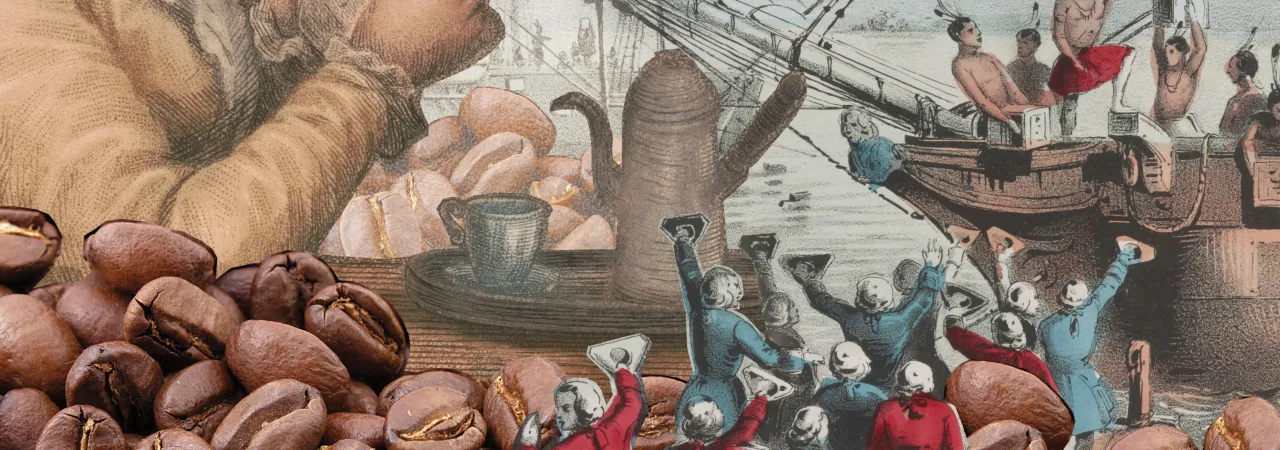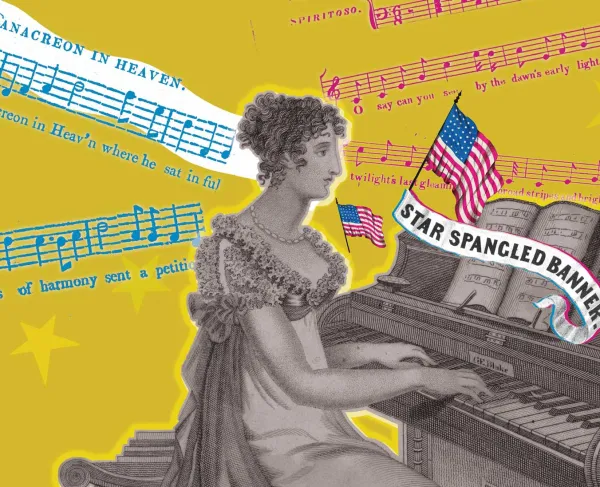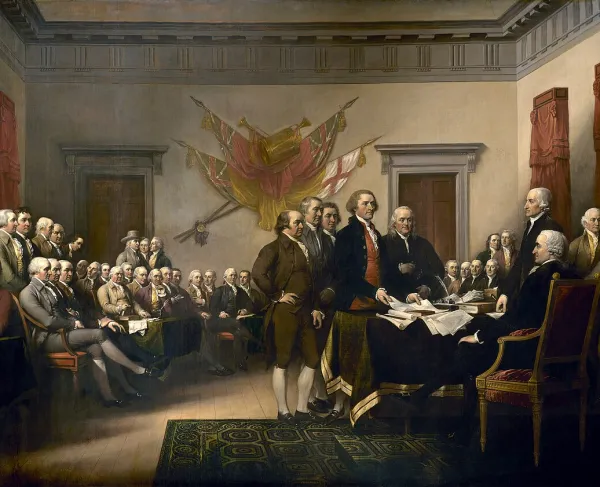
Did you know that the first mention of coffee in America was by Jamestown's most famous settler? Captain John Smith knew about coffee from his travels in Turkey and told his fellow colonists about the bean, although it would not arrive in the US until the 1640s. Coffee seeds themselves were introduced to the New World in 1723, and the coffee trade flourished. Even George Washington took part, growing coffee beans at his Mount Vernon estate, a variety of which is still grown in that garden today. Thomas Jefferson noted the connection between coffee houses and bold thinking, calling it "the favorite drink of the civilized world." We understand his point!
Here are 5 facts to pique your curiosity about how this perky beverage played a role in the Revolution.
Drinking coffee was viewed as a political statement in the colonies following the Boston Tea Party, with tea then being considered the beverage of the enemy.
The Tea Act of 1773 was meant to bail out the British East India Company after it had run into financial trouble. Previously, the Townshend Revenue Act taxed a number of imported goods, including tea. Colonists boycotted those goods and, accordingly turned to drinking coffee instead as a form of protest. When the Tea Act passed, colonists remained angered that the colonial tea merchants were cut out when the East India Company was granted permission to sell tea directly in the American colonies. The tea boycott ensued, and coffee quickly replaced beer as the most popular beverage of choice in the morning.
Coffee selling in colonial America required a license, much like today's alcohol regulations.
In 1670 in Boston, Massachusetts, Dorothy Jones became the first licensed coffee trader in the colonies, gaining official permission to sell coffee and chocolate at her tavern, like an alcohol license. Coffee had been introduced by the Dutch to New Amsterdam in 1640, but the beans were old and not very tasty. Drinking coffee didn't catch on until the English found a more efficient way to transport it. The first coffee house in Boston opened in 1689 and was called the London Coffee House. When the Revolution came to Boston, it was quickly renamed to the "American Coffee House."
Coffee was present during the formation of America's Founding Documents
An early reading of the Declaration of Independence occurred on the steps of the City Tavern, also known as the Merchant Coffee House, in Philadelphia, Pennsylvania. The tavern was built in 1773 on South Second Street, and was visited by George Washington, Thomas Jefferson, and Paul Revere, among others. The First Continental Congress held meetings there. The building was reconstructed in 1976, and today houses a restaurant.
Coffee houses served as an important center of political discussions.
Most homes were not equipped with the tools to brew coffee, so coffeehouses rapidly became popular places for people of all socio-economic statuses. Additionally, as coffee replaced beer as the chosen drink, more political conversations occurred. The Boston coffeehouse and tavern the Green Dragon, built in 1701, was known as the "Headquarters of the Revolution" because of the meetings that occurred in the basement. Members of the St. Andrew's Lodge of Freemasons, which included Paul Revere, bought the tavern in 1764, and the Sons of Liberty began meeting there. Some even suggest that parts of the Boston Tea Party were planned there.
Many farmers experimented with growing coffee in the United States
George Washington was one of the first farmers to do so in Virginia. Today, Mount Vernon continues the gardening tradition Washington began, with two coffee plants still cultivated on site. These plans are mostly grown for their appealing looks rather than their productivity in producing caffeinated beverages. An arabica strand of coffee bean comes from seeds given to him by Thomas Law, his grandson-in-law, in 1799. The garden also grows the Kentucky Coffee Tree, which produces highly toxic beans that should not be consumed unless roasted. The Marquis de Lafayette wrote to Washington requesting seeds from the tree for use in the royal garden in France.
For further reading on the role of this beverage during our nation's conflicts, read more about coffee and the Civil War, both on the home front and how it featured in a soldier's daily life. You can also read more about tastes that Civil War soldiers experienced, including whiskey, molasses, and hard tack. If you're curious to read more about the history of coffee and it's connection with the United States, check out Uncommon Grounds: The History of Coffee and How it Transformed Our World.





